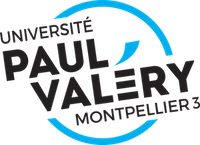Among several linguistic minority communities living in the Tokyo Megalopolis Region, the Korean community is one of the largest and oldest linguistic groups. In terms of language use and language maintenance, the current generation has had more freedom in their language choices than the prior generations of so-called “Zainichi” Koreans, i.e. the permanent Korean residents of Japan whose roots are linked to the Japanese occupation of Korea between 1910 and 1945. As the second largest ethnic group in Japan, the Korean community has taken different steps to make Korean linguistic education available for the next generation of Korean residents in Japan, especially as the more recent immigrants also realized the importance of being able to speak their first language. A comparable situation can be found among Korean immigrant parents in the United States (Brown, 2011), but relatively little research has been conducted in that renewed perspective in Japan so far. Indeed, if Lee (2017) points out the reality of the loss of Korean identity among later generations of Zainichi Koreans in Japan, and the necessity to have a better understanding of the educational needs of Zainichi Koreans in that respect, not many studies are considering Korean in Tokyo for what it can be (i.e. a popular language of the XXIst century) rather that what is used to be (i.e. the language of Zainichi Koreans). Therefore, although the history of Zainichi Koreans will be briefly introduced in this presentation, our main focus will be set on the Korean “newcomers” who moved to Japan after the 1970s and who encountered less discrimination and more openness towards their Korean linguistic identity. This research is partly embedded in the social network theory (Milroy & Milroy, 1978), according to which social interactions and relationships have an impact on how speakers use languages. In order to grasp the way in which this new generation of Koreans in Japan uses their two (or three) languages (Korean and Japanese, and English for some of them) and assess the value of Korean language use and transmission in their own community (i.e. permanent residents of Japan with Korean nationality), a pilot survey (distributed online) was carried out in 2020 among three different social groups, which were part of the researcher's social network: university students (N=44), young company workers without children (N=59), and parents (N=109). They completed a quantitative questionnaire about their language use, language attitude, language perception, and ethnolinguistic vitality of the Korean language in Tokyo. The results of the survey are analyzed and discussed in light of the demolinguistic evolution of Tokyo, taking into account mainstream linguistic minorities such as Korean or Chinese residents who have been settled in the country for a long time, but also newcomers who moved to Japan much later with distinct purposes, as well as the gradual transformation of Tokyo into a more “global” hub over for the past 20 years. This study is part of a qualitative-quantitative study of the use and transmission of the Korean language in Tokyo within the field of Heritage Language Transmission (HLT) studies and urban sociolinguistics.Our conclusion will focus on the educational implications of our study, i.e. possible ways to enhance the perception of Korean linguistic abilities as a positive asset for the next generation of international Tokyoites.

 PDF version
PDF version
